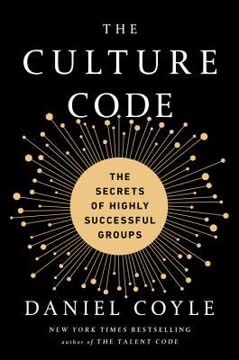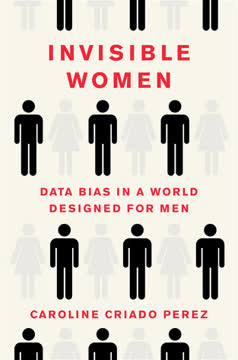Key Takeaways
1. Cultural differences shape communication styles and expectations
"If you are walking through the street without a jacket, little old Russian ladies may stop and chastise you for poor judgment."
High-context vs. low-context communication. Cultures vary in how explicitly they convey information. Low-context cultures like the United States and Germany prefer direct, explicit communication. High-context cultures like Japan and China rely more on implicit, contextual cues.
Impact on business interactions. These differences can lead to misunderstandings in multicultural settings. For example, an American might perceive a Japanese colleague as vague or evasive, while the Japanese person may view the American as overly blunt or lacking subtlety.
- Low-context cultures:
- Prefer clear, detailed instructions
- Value directness and transparency
- High-context cultures:
- Rely on shared assumptions and context
- May find overly explicit communication unnecessary or offensive
2. Direct vs. indirect negative feedback varies across cultures
"To a Dutchman, it is all a lot of hogwash. All that positive feedback just strikes us as fake and not in the least bit motivating."
Cultural approaches to criticism. Some cultures, like the Netherlands and Russia, value direct negative feedback. Others, like the United States and Japan, prefer a more indirect approach, often cushioning criticism with positive comments.
Adapting feedback styles. Understanding these differences is crucial for effective cross-cultural management. A manager from a direct-feedback culture working with team members from indirect-feedback cultures may need to soften their approach to avoid demotivating their team.
- Direct feedback cultures:
- Value honesty and transparency
- May perceive indirect feedback as insincere
- Indirect feedback cultures:
- Emphasize preserving harmony and face
- May interpret direct feedback as harsh or disrespectful
3. Persuasion techniques differ between principles-first and applications-first cultures
"In Germany, we try to understand the theoretical concept before adapting it to the practical situation."
Principles-first vs. applications-first reasoning. Some cultures, like Germany and France, prefer to start with general principles before moving to specific applications. Others, like the United States and UK, prefer to begin with concrete examples and then derive general principles.
Implications for business presentations. When presenting ideas or proposals in multicultural settings, it's important to adapt your approach based on your audience's cultural background. A presentation that works well in New York might fall flat in Paris if not adjusted accordingly.
- Principles-first cultures:
- Value theoretical foundations
- Prefer to understand "why" before "how"
- Applications-first cultures:
- Focus on practical examples and case studies
- Prefer to see "how" something works before understanding "why"
4. Leadership styles range from egalitarian to hierarchical across cultures
"In Denmark, it is understood that the managing director is one of the guys, just two small steps up from the janitor."
Cultural variations in power distance. Cultures differ in their acceptance of hierarchy and power inequality. Egalitarian cultures like Denmark value flat organizational structures, while hierarchical cultures like China emphasize clear power differentials.
Adapting leadership approaches. Effective global leaders must be able to adjust their style based on the cultural context. An egalitarian approach that works well in Sweden might be perceived as weak or ineffective in a more hierarchical culture like Japan.
- Egalitarian cultures:
- Value participative decision-making
- Encourage open communication across hierarchical levels
- Hierarchical cultures:
- Respect formal authority
- Expect clear direction from leaders
5. Decision-making processes vary between consensual and top-down approaches
"Great! Decision made!" only to pause and clarify: "Decision with a small d, that is! We still need to run this by our colleagues at home, so don't start work on it just yet!"
Consensual vs. top-down decision-making. Some cultures, like Japan and Germany, prefer consensual decision-making processes that involve extensive consultation. Others, like the United States, tend towards more top-down approaches where decisions are made quickly by individuals in authority.
Navigating multicultural decision-making. In global teams, it's crucial to establish clear expectations about the decision-making process. This may involve finding a middle ground or explicitly defining when consensus is needed versus when quick, individual decisions are appropriate.
- Consensual decision-making cultures:
- Value input from all stakeholders
- May have longer decision-making processes
- Top-down decision-making cultures:
- Emphasize speed and efficiency
- Rely more on individual authority
6. Trust-building methods differ between task-based and relationship-based cultures
"In China, business relationships are personal relationships. The loyalty is to the individual and not to the company."
Task-based vs. relationship-based trust. In task-based cultures like the United States, trust is primarily built through professional competence and reliability. In relationship-based cultures like China, trust is developed through personal connections and shared experiences outside of work.
Implications for business relationships. Understanding these differences is crucial for building effective partnerships across cultures. In relationship-based cultures, investing time in social activities and personal relationships is often a prerequisite for successful business dealings.
- Task-based cultures:
- Focus on professional credentials and track record
- Separate personal and professional relationships
- Relationship-based cultures:
- Emphasize personal connections and mutual understanding
- Blur the lines between personal and professional relationships
7. Attitudes towards confrontation and disagreement are culturally influenced
"Pick up a Japanese 10,000-yen and you will see the face of Prince Shotuku, who developed the first Japanese written constitution. Prince Shotuku's Seventeen-Article Constitution begins, 'Harmony should be valued and quarrels should be avoided.'"
Cultural approaches to disagreement. Some cultures, like France and Israel, view open disagreement as a natural and productive part of discussion. Others, like Japan and Thailand, prioritize harmony and avoid direct confrontation.
Managing multicultural teams. Leaders of diverse teams need to create an environment where all members feel comfortable expressing their views while respecting different cultural norms around confrontation. This might involve establishing clear ground rules for discussion or using structured methods to elicit diverse opinions.
- Confrontational cultures:
- Value open debate and direct expression of disagreement
- See conflict as potentially productive
- Harmony-seeking cultures:
- Prioritize group cohesion and consensus
- May express disagreement indirectly or privately
8. Perceptions of time and scheduling vary between linear-time and flexible-time cultures
"In China, everything happens immediately, without preplanning. The Chinese are the kings of flexibility. This is a culture where people don't think about tomorrow or next week; they think about right now."
Linear-time vs. flexible-time orientations. Cultures differ in their approach to time and scheduling. Linear-time cultures like Germany and Japan value punctuality and strict adherence to schedules. Flexible-time cultures like India and Brazil take a more relaxed approach to time, prioritizing adaptability over rigid planning.
Implications for global project management. These differences can create significant challenges in multinational projects. Effective global managers need to establish clear expectations around deadlines and schedules while also building in flexibility to accommodate different cultural norms.
- Linear-time cultures:
- Value punctuality and detailed planning
- May perceive flexible-time approaches as disorganized or unprofessional
- Flexible-time cultures:
- Emphasize adaptability and responsiveness to changing circumstances
- May view linear-time approaches as rigid or inflexible
Last updated:
FAQ
What's The Culture Map about?
- Understanding cultural differences: The Culture Map by Erin Meyer explores how cultural differences impact communication, management, and collaboration in global business settings.
- Eight cultural scales: The book introduces eight scales that map cultural differences, including Communicating, Evaluating, Leading, Deciding, Trusting, Disagreeing, Scheduling, and Persuading.
- Practical strategies: Meyer offers practical strategies for navigating cultural differences, helping readers avoid misunderstandings and improve collaboration in diverse teams.
Why should I read The Culture Map?
- Enhance global collaboration: The book equips you with tools to work effectively in multicultural environments, crucial in today’s globalized business world.
- Avoid costly misunderstandings: Insights provided can help prevent miscommunications arising from cultural differences, saving time and resources.
- Develop cultural intelligence: It helps build cultural intelligence, enabling adaptation of communication and management styles to suit various cultural contexts.
What are the key takeaways of The Culture Map?
- Cultural mapping: Mapping your own culture against others using the eight scales helps identify potential areas of misunderstanding and conflict.
- Flexibility in leadership: Effective leaders must be flexible and able to switch between different cultural styles to connect with diverse team members.
- Trust-building strategies: Building trust through personal relationships is crucial, especially in cultures that prioritize relationship-based interactions.
What are the eight scales that map the world’s cultures in The Culture Map?
- Communicating: Ranges from low-context to high-context communication styles, affecting how messages are conveyed and interpreted.
- Evaluating: Measures the directness of negative feedback, with some cultures favoring blunt criticism while others prefer a nuanced approach.
- Persuading: Distinguishes between principles-first and applications-first reasoning, impacting how arguments are structured and presented.
- Leading: Reflects the degree of hierarchy in a culture, from egalitarian to hierarchical leadership styles.
- Deciding: Assesses whether decision-making is consensual or top-down, influencing how teams operate.
- Trusting: Differentiates between task-based and relationship-based trust, affecting how relationships are built in business.
- Disagreeing: Measures whether cultures are confrontational or avoid confrontation, impacting how disagreements are handled.
- Scheduling: Looks at perceptions of time, ranging from linear-time to flexible-time cultures, which affects planning and deadlines.
How does The Culture Map define high-context and low-context communication?
- High-context communication: Cultures like Japan and China rely heavily on implicit messages and shared understanding, requiring listeners to read between the lines.
- Low-context communication: Cultures like the United States and Germany prioritize explicit and clear communication, with the responsibility for understanding lying primarily with the speaker.
- Cultural implications: Understanding these differences is crucial for effective communication, as misinterpretations can lead to misunderstandings and conflict.
How does The Culture Map define Trusting?
- Cognitive vs. affective trust: Cognitive trust is based on reliability and competence, while affective trust is built through emotional connections and personal relationships.
- Cultural examples: Western cultures often emphasize cognitive trust, whereas cultures like Brazil and China prioritize affective trust.
- Building trust strategies: Understanding the cultural context and investing time in relationship-building activities are essential for establishing trust.
What strategies does The Culture Map suggest for effective Deciding?
- Consensus vs. top-down: Highlights differences between cultures that favor consensus-based decision-making and those that prefer a top-down approach.
- Cultural implications: Consensus cultures may take longer to make decisions, while top-down cultures make decisions quickly, which can lead to frustration.
- Adapting decision-making styles: Establish clear protocols for decision-making that accommodate the preferences of all team members.
How can I improve my Evaluating skills based on The Culture Map?
- Feedback styles: Different cultures approach giving and receiving feedback differently, with some preferring direct feedback and others a more indirect approach.
- Cultural awareness: Tailor feedback methods to suit the cultural context, using softer language in cultures that avoid confrontation.
- Practical strategies: Practice active listening and ask open-ended questions to encourage dialogue and create a safe space for feedback.
What is the significance of Scheduling in The Culture Map?
- Linear vs. flexible time: Differentiates between cultures that view time as linear and structured and those with a more flexible approach.
- Cultural implications: Linear-time cultures value punctuality, while flexible-time cultures prioritize relationships and adaptability.
- Effective scheduling strategies: Establish clear team protocols for scheduling and time management that accommodate all members' preferences.
How does The Culture Map address Disagreeing?
- Confrontational vs. non-confrontational: Explores how different cultures handle disagreement, with some embracing open debate and others avoiding confrontation.
- Cultural examples: Confrontational cultures see disagreement as healthy, while non-confrontational cultures may view it as disrespectful.
- Strategies for productive disagreement: Create a safe environment for open dialogue and encourage team members to express opinions without fear of backlash.
What are the best quotes from The Culture Map and what do they mean?
- “You have two eyes, two ears, but only one mouth. You should use them accordingly.” Emphasizes the importance of listening and observing in cross-cultural interactions.
- “A fish only discovers its need for water when it is no longer in it.” Illustrates how cultural norms are often invisible to those immersed in them, highlighting the need for self-awareness.
- “The relationship is your contract.” Reflects the importance of personal connections in many cultures for business success.
What is the significance of cultural relativity in The Culture Map?
- Understanding context: Cultural relativity emphasizes understanding behaviors and communication styles in relation to their cultural context.
- Avoiding stereotypes: Recognizing cultural relativity helps move beyond stereotypes and appreciate cultural complexities.
- Enhancing collaboration: Acknowledging cultural relativity improves teamwork and collaboration in multicultural settings.
Review Summary
The Culture Map receives mostly positive reviews, praised for its practical insights into navigating cultural differences in business. Readers appreciate Meyer's eight-scale model for comparing cultures and her use of real-life examples. Many find it helpful for understanding workplace dynamics and improving international communication. Some criticize the book's reliance on anecdotes and generalizations. Overall, reviewers consider it a valuable resource for those working in multicultural environments, though a few question its scientific rigor and depth of analysis.
Similar Books









Download PDF
Download EPUB
.epub digital book format is ideal for reading ebooks on phones, tablets, and e-readers.




